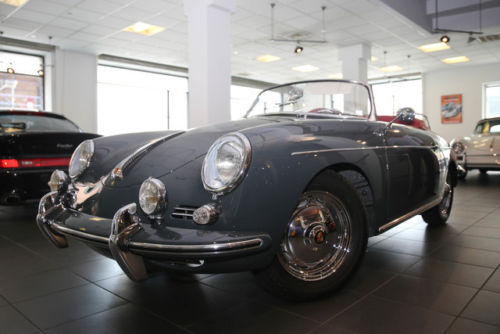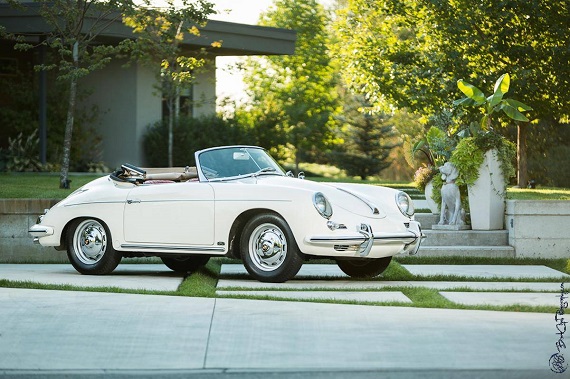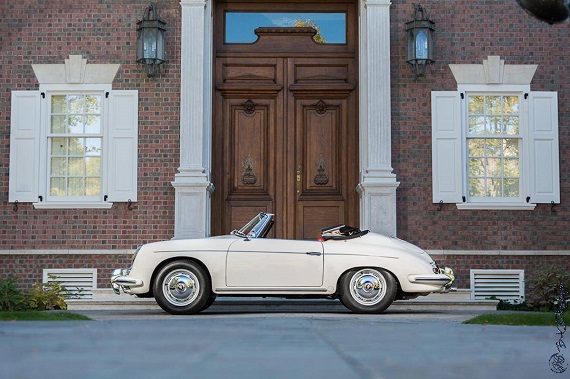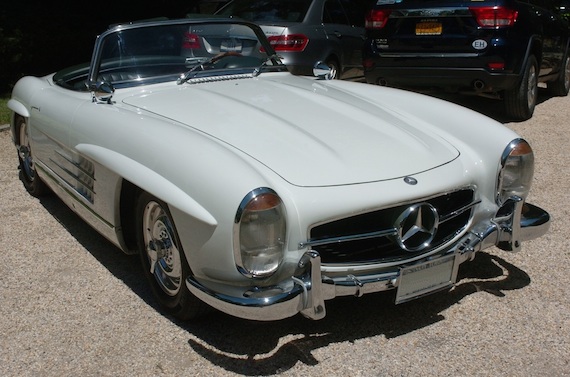I’ve had my eye on this car for a while. Which, of course, means it has been for sale for a while. The reason for…
2 CommentsTag: 1961
I’m not going to pretend to be intimately familiar with the Porsche hot rod culture of California, especially as it relates to the 356 since…
2 CommentsIf you’ll pardon the strange introduction, this is not the car I was originally going to feature. I was going to feature one of my favorite color combinations on any Porsche (though we typically only see it on the 356): Slate Grey over a Red interior. That listing was removed so it was time to find something else. But it made me search for another Roadster and while this one isn’t quite as awesome of a combination, damn does it look good. Here we have a restored Ivory 1961 Porsche 356B 1600 Roadster again with a Red interior. These colors possess a pretty stark contrast with one another, but work quite well. And there are so many little hand wrought details on these cars that we can pore over for hours. When such details find themselves on the lines of the 356 Roadster then the appeal jumps up all the more. The Roadster was Porsche’s replacement for the Convertible D, which in turn had replaced the Speedster as the pared down version of the 356 Cabriolet. The Speedster it seems was a little too spartan, especially with regard to the windshield, so the Convertible D and Roadster added a little back to the car. Though by modern standards any 356 still remains very spartan.
CLICK FOR DETAILS: 1961 Porsche 356B 1600 Roadster on Hemmings Motor News
Comments closedThe world of Auto Union is full of paradox. That the company even came into existence is itself somewhat of a fluke, but a harsh economic situation in Germany in the 1930s led four mostly failing companies to band together in the hope that united, they might survive. Out of that union was born the image of the four rings that today are worn proudly by the last remnant, and the least successful, of the original four – Audi. If that isn’t strange, the history of how we got to that point certainly is. Only one of the companies was truly successful when they banded together, and they produced primarily motorcycles, not cars. Yet only one year after being founded, the fledgling company put its technical prowess up against the might of the most storied car company in the world – indeed, the inventors of the automobile – Daimler-Benz. And by “its” technical prowess, I mean the technical prowess of one Ferdinand Porsche, himself an outcast of sorts from several car companies. His design was both unorthodox and unusual, with a single-cam supercharged 16 cylinder engine mounted in the middle of the car. Mind you, this was a full 25 years before Cooper would make the “revolutionary” change that would be the accepted practice of all modern Formula One cars. With entirely new suspension designs and strange handling behaviors – never mind enough torque to jump start an industrial production line and tires that would consequently disintegrate immediately or fuel that was really just a high explosive in liquid form – the Auto Union Grand Prix cars shared nothing in common with the road-going models marketed by the company, who at the start of the 1930s didn’t even produce what could loosely be identified as a sports car.
Yet, it worked.
Auto Union may numerically have not won as many races as Mercedes-Benz did over the same period, but they established themselves on the same level – no small feat, considering the company. They won races, championships and set records and were primed with new luxury, smart economy and even sports vehicles to capitalize on their great success at the race track and in the record books. And then, World War II broke out, and as fate would have it Auto Union’s primary headquarters were in Saxony. For those of you who aren’t particularly fond of maps, Saxony happens to be exactly where the Russians ended up advancing into in 1945. Mired in what would become East Germany, there didn’t appear to be much hope for Auto Union and it seemed they were relegated to the history books. But in 1949 the company was relaunched, now based in Ingolstadt – not far from its old rivals. The brand that had previously been the bread and butter of Auto Union’s sales – DKW – would carry the four rings and continue to make economy cars, but little else remained from the former glory of Auto Union. Indeed, even DKW itself was full of contradictions; the name derived from “Steam Powered Car” in German (Dampf-Kraft Wagen), yet the company hadn’t produced a steam car since the late teens. Their current lineup continued the strange trend with oxymoronic names like “3=6”. Math not being their strong suit, DKW alternatively called the car F900, F91, and finally “Sonderklasse”, though there was no longer a non-Sonder model. The underpinnings would make Swedes smile, with a two-stroke inline-3 powering the front wheels. And from these modest bones the only officially badged “Auto Union” was created – the 1000SP. With a bit more power and styling borrowed from an American classic, it was a special car:
CLICK FOR DETAILS: 1961 Auto Union 1000SP Coupe on eBay
2 CommentsSometimes there is that one possession that we wind up hanging on to for years, whether it is for sentimental value, material value or perhaps it is just plain cool. For me, I have a vintage watch that I have prized for years and look after. On a much larger scale, the same thing seems to be true with the former owner of this 1961 Mercedes-Benz 300SL, who kept the car for the last 42 years. This was a car that helped propel Mercedes into the spotlight with luxury car buyers stateside, as the Gullwing and later Roadster variant we see here were cars flaunted by the rich and famous. With matching numbers and documentation dating back to when it was purchased, this will surely be a prize in any collection.






